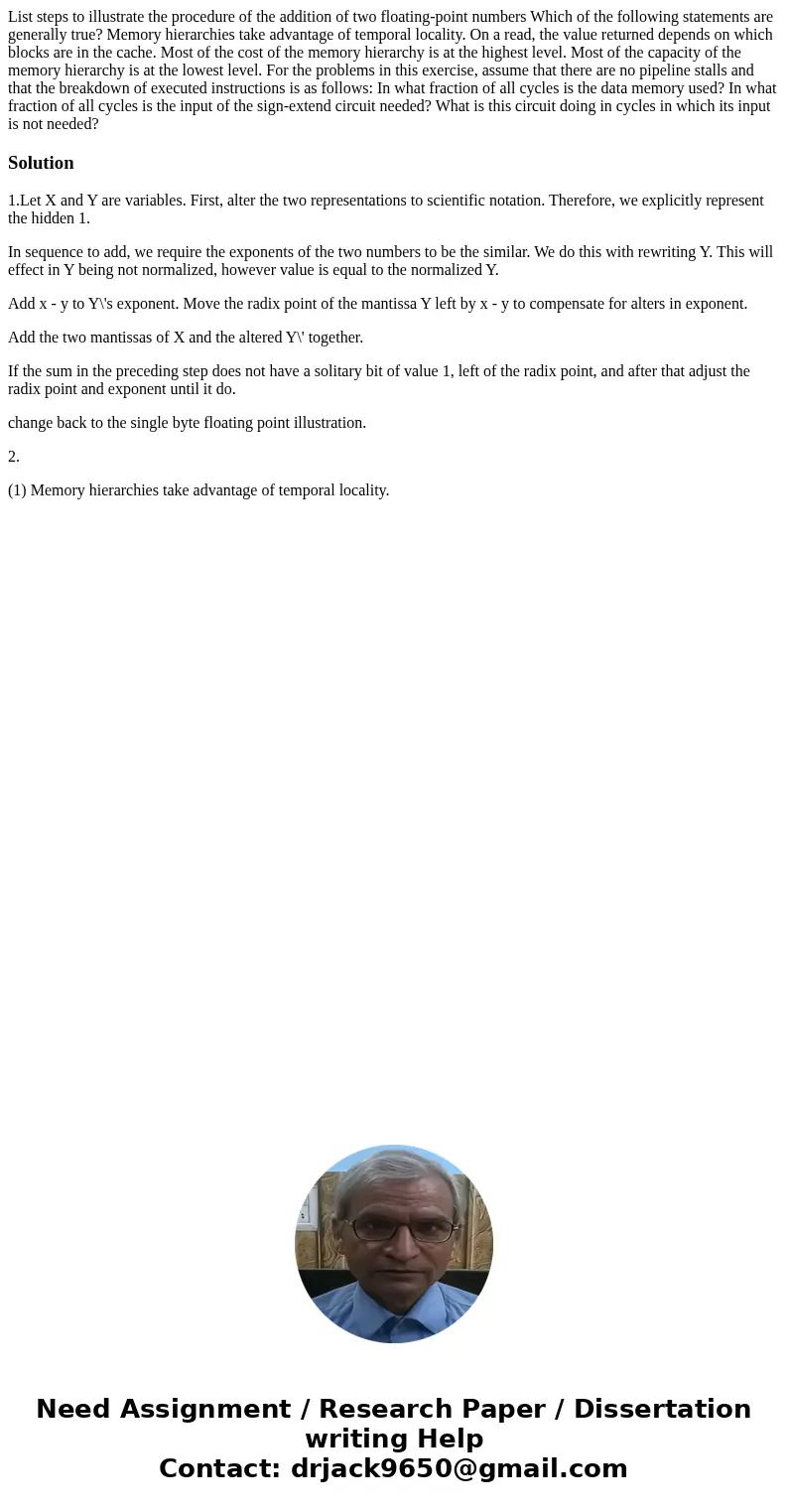List steps to illustrate the procedure of the addition of tw
Solution
1.Let X and Y are variables. First, alter the two representations to scientific notation. Therefore, we explicitly represent the hidden 1.
In sequence to add, we require the exponents of the two numbers to be the similar. We do this with rewriting Y. This will effect in Y being not normalized, however value is equal to the normalized Y.
Add x - y to Y\'s exponent. Move the radix point of the mantissa Y left by x - y to compensate for alters in exponent.
Add the two mantissas of X and the altered Y\' together.
If the sum in the preceding step does not have a solitary bit of value 1, left of the radix point, and after that adjust the radix point and exponent until it do.
change back to the single byte floating point illustration.
2.
(1) Memory hierarchies take advantage of temporal locality.

 Homework Sourse
Homework Sourse